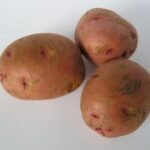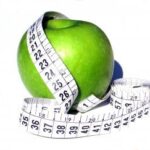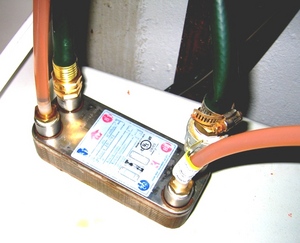With all the hype surrounding carbohydrates today, it’s no wonder we’re confused. One day the news says bananas are good for you, the next they are described as a diet disaster. What’s one to think about the mysterious world of carbs? Let’s do a simple breakdown of carbohydrates, the good and the bad, so that you may finally put your questions to rest.
We hear it every day, practically: “Eat lots of good carbs, forgo the bad ones. But what, exactly, constitutes a food’s placement into either category? To be able to make the decisions on our own, we must first understand the nature of the carbohydrate. Carbohydrates are found in most foods- pasta, potatoes, cereal, bread, cakes, muffins, cookies, donuts, fruits, vegetables and many sauces. There are three main types of carbohydrate: sugars, starches and fiber. Sugar is found in baked goods, soda pops, fruit juices, fruits and many other foods. It can be listed on an ingredient label as sugar itself, or an array of other names: high fructose corn syrup, fructose, lactose, sucrose or cane sugar. Most ingredients ending in the suffix “ose” indicate a sugar. The exception is “sucralose”, which is the chemical name for the popular sweetener “Splenda”. These ingredients all indicate that a sugar has been added into your food or beverage. The higher it appears on the ingredient list, the more of it there is in that particular item. “Fructose” is the natural sugar found in all fruits and fruit juices. Starches are naturally occurring carbohydrates. They are found in abundance in potatoes, flour, baked goods and pasta. Fiber is a carbohydrate that your body does not process. It is not able to be broken down in digestion. It aids in gastrointestinal health and may prevent colon cancer. Fiber is found in whole grain products, fruits and vegetables.
OK, so now that we know what carbs are- where can we find the good ones? Good carbs are those that contain healthy amounts of fiber and whole grain, as well as most vegetables and fruits. Whole grain breads and pastas, brown rice, green leafy vegetables, squashes, tomatoes, peppers, onions, and mushrooms are all sources of “good” carbs. These foods make excellent choices because they are filling and have less of an effect on blood sugar than do “bad” carbs, which we will go over in the next paragraph. These foods are digested slowly and produce an even stream of energy, instead of one quick boost, the way a candy bar would. They also contain much needed vitamins and minerals.
Ahh, now the bad ones: these are the products we consume too much of- the “Oh, I shouldn’t’s” and the “OK, just one’s. These are cookies, cakes, white bread, white pasta, white rice, muffins, lunch box cakes like Little Debbie’s, waffles, pancakes, soda pop, soft drinks and candy. These products are laden with sugar and refined carbohydrates, and many of them contain a lot of fat. These are products have little nutritional value, and although they taste good, they are devastating to our health and welfare if consumed in great quantity. They cause noteworthy spikes in blood sugar, and leave us craving more. They provide quick bursts of energy that are followed by hunger and cravings. All in all, these products are unhealthy.
But what can you do if you just can’t give up baked goods or breads? The answer is simple. While you need to cut down on carbohydrate consumption and make lean protein and healthy fats part of your diet, you can substitute homemade products for many of these “no-no” foods. Instead of using white flour to bake with, purchase whole grain wheat flour. It tastes a little different, but you can still make a delicious cake or muffins that are much better for you, while getting a fiber boost too. When baking, use Splenda instead of sugar, as it will keep your blood sugar more stable, thereby causing less cravings later on. It’ll also save you on calories.
The best thing to remember is moderation. Remember to eat whole, unprocessed foods as much as possible. Most of these “no-no” products are highly processed, manufactured items. And sneaking one in a couple of times a week is alright- it’s just that relying on them for the base of your nutritional needs can cause problems and weight gain. Focus on lean protein sources such as fish and chicken cooked in healthy oils like olive or canola. Eat plenty of vegetables and fruits, and use refined carbohydrates as a treat, not a staple. Your body will thank you for it.






